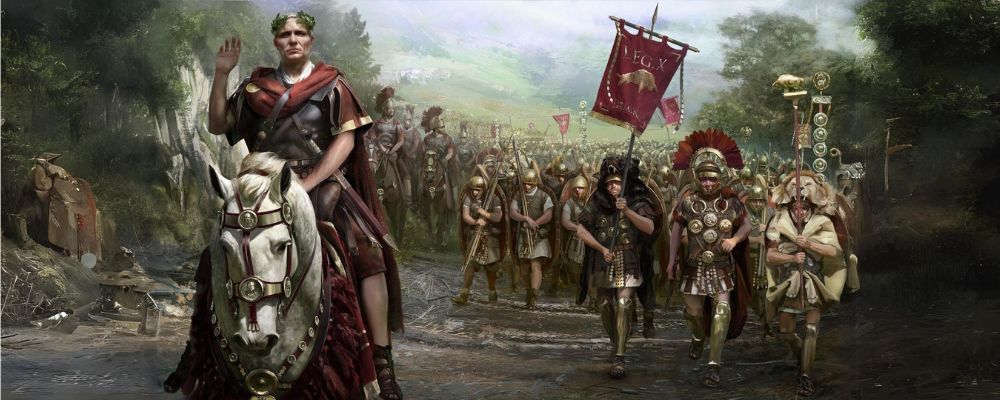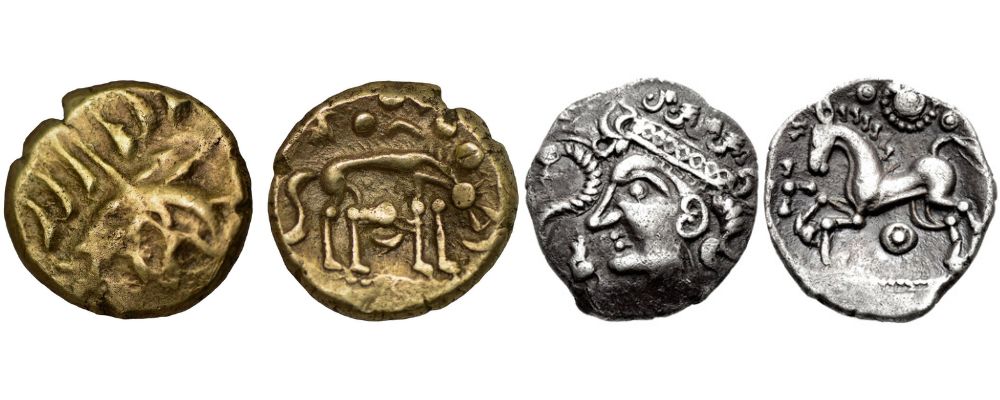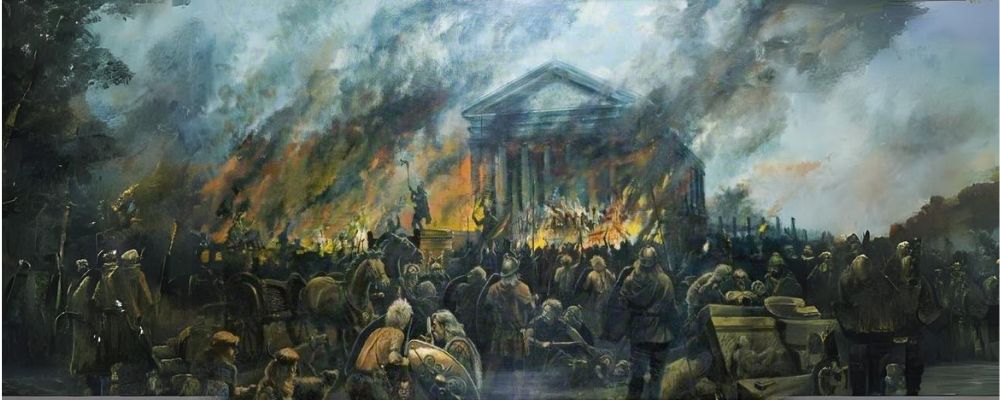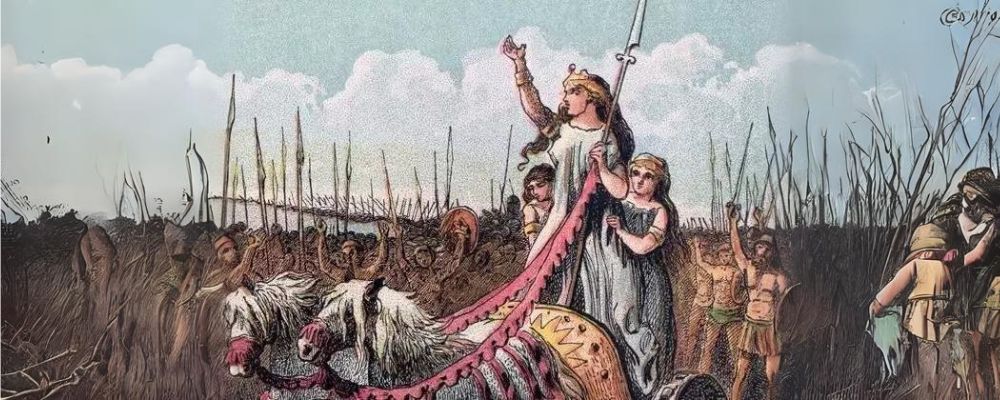Before the Vikings raided the monasteries of England and established Danelaw, before the Anglo-Saxons established their kingdoms, and before the Romans made Britannia one of its colonies, the island was occupied by the Celts.
One of the most famous heroes of Celtic Britain is Boudica, also written Boudica or Boadicea, a queen of the Iceni tribe who led a resistance to the Roman invasion in the 1st century AD.
This is her story.
Conquest for Britain

The Celts occupied Britain from around the 6th century BC and reigned supreme until the Romans turned their attention to the small island.
Julius Caesar first invaded in 55 BC, but was then distracted by the civil war back home.
The Romans returned to Britain in AD 43, and began to conquer the island as one of its provinces.
Hadrian built his famous wall to delineate the province in AD 122. Britain became a firm part of the Roman empire and even made a few of their generals Roman emperors. But the Romans were expelled from Britain at the start of the 5th century AD.
When the Romans arrived, the Celts were organized as individual tribes. Part of the success of the Roman conquest is that they could take advantage of existing disputes between individual tribes, making alliances with some against others.
Making and Breaking Alliances

The Iceni tribe occupied territory in modern Norfolk and produced some of the earliest known British coins.
They initially revolted against the Romans in AD 47 when the then Roman governor Publius Ostorius Scapula wanted to disarm all the people of Rome.
But by AD 60, the Iceni were cooperating with Rome and accepted the status of a client kingdom along with 10 other Celtic tribes.
This gave the Iceni relative autonomy as long as they cooperated with Rome.
At this time, the Iceni were ruled by Prasutagus, who was married to Boudica. This seems to be an honorific title meaning “victorious”.
It is not clear what her real name was or what she was called during her life. She was believed to have been of royal descent herself and described as unusually tall with long tawny hair that hung to her waist.
She is also described as having a strong and harsh voice and a piercing gaze.
She also wore a large golden necklace, probably a torque, as a sign of her status.
The reign of Prasutagus was known to be very prosperous for the Iceni, largely thanks to their Roman alliance.
He tried to ensure the independence of his kingdom by bequeathing it jointly to his daughters and the Roman emperor in his will.
But the Romans ignored his dying wish and brutally took the kingdom following Prasutagus’ death.
According to the Roman historian Tacitus, Boudica was flogged and her two daughters raped.
In addition to this personal affront, it is said that the Romans ransacked the Iceni countryside and demanded that the Inceni repay loans from the Romans that they thought had already been paid through gift exchange.
These actions triggered the Iceni to revolt, apparently helped along by a speech given by Boudica in which she reminisced about life before the Roman occupation and pointed out that riches cannot be enjoyed when you are subject to slavery.
The Roman historians that recorded the speech, and probably invented it, made a point of showing that the “barbarians” were willing to sacrifice a higher quality of life under the Romans for the sale of freedom.
Boudica is also said to have performed acts of divination, predicting victory, to ensure the morale of the army.
It is said that she released a hare from within the folds of her dress and interpreted the direction it ran in as the path laid out for the army.
The Iceni Revolt

In AD 60/61, under the leadership of Boudica, the Iceni united with the Trinovantes and brought together an army of 120,000 men.
They decided to make their first attack against Camulodunum (Colchester) which had been set up as a colony for Roman soldiers who agreed to stay in Britain in exchange for land.
There, the Romans had also erected an enormous temple to the previous emperor Claudius, at the expense of the locals.
The Romans in the colony were caught by surprise and did not have the manpower to fight the Celts, so many fell back to Londinium (London).
One Roman general attempted to help the colony and the people who were barricaded in the temple, but they were killed almost to a man, with the exception of the commander and a few cavalry.
The Celts smashed the city and beheaded a statue of the emperor Nero that stood before the temple.
The Roman governor Gaius Suetonius Paulinus was on campaign on the island of Mona, in northern Wales, made his way back to Britain and joined his forces at Londinium.
But by the time he had arrived, other tribes had joined the Iceni and the Romans were heavily outnumbered.
Suetonius fell back to regroup and left both Londunium and the nearby city of Verulamium (St Albans) to the Celts. According to Tacitus, Boudica and her people killed 80,000.
Cassius Dio suggests that Boudica treated the Romans with the same brutality that they had treated her family. Noble women were impaled on spikes.
Boudica ordered their breasts cut off and sewn to their mouths. The Celts then made sacrifices to the Celtic gods, especially Andraste.
We only know about the Celtic goddess Andraste from the Roman author Cassius Dio, but since the Celts worshiped local deities and left no written records, this is perhaps not surprising.
She seems to have been a goddess of war and victory, or at least that is how the Roman Cassius Dio understood her.
Boudica’s Defeat

The governor regrouped his men, but still only amassed a force of around 10,000 men, while Cassius Dio suggests that by this time Boudica’s army was around 230,000.
But the Romans used the territory to their advantage ensuring that the Celts could not take immediate advantage of their superior numbers.
The Romans forced the Celts to funnel their superior numbers through a desfile, which turned the large numbers into an unruly mass.
The Romans then rained missiles down on them as they advanced.
When they had no more missiles, the ROmans charged in a wedge formation that allowed for organized slaughter.
The Celts were unable to retreat because they were hemmed in by their own wagon train.
The Celts were crushed, with even women and animals attached to the army being slaughtered.
In response to her defeat, Boudica poisoned herself, as killing yourself was often considered the right response to failure at the time.
She was given a lavish funeral by her followers.
Despite her failure, the emperor Nero seriously considered pulling his troops out of Britain due to the heavy losses and fear of further revolts.
However, in the end, Suetonius’ bloody victory was enough to cement Roman control in Britain.
Wealth of the Celts

While the Roman authors who record the story of Boudia suggest that the Celts were barbarians, they were in fact wealthy, both agriculturally and culturally.
The great torc of Snettisham was created in Britain in the 1st century BC, as was the fine bronze mirror with elaborate decoration depicted above.
The Inceni also produced their own coinage, depicted above, reflecting a sophisticated economy and system of trade.
The Vikings wore coins as jewelry and only started to mint a currency in the 10th century.
The Celts were sophisticated people, and you can find pieces in the VKNG Store inspired by their art and culture in the Celtic Collection.







